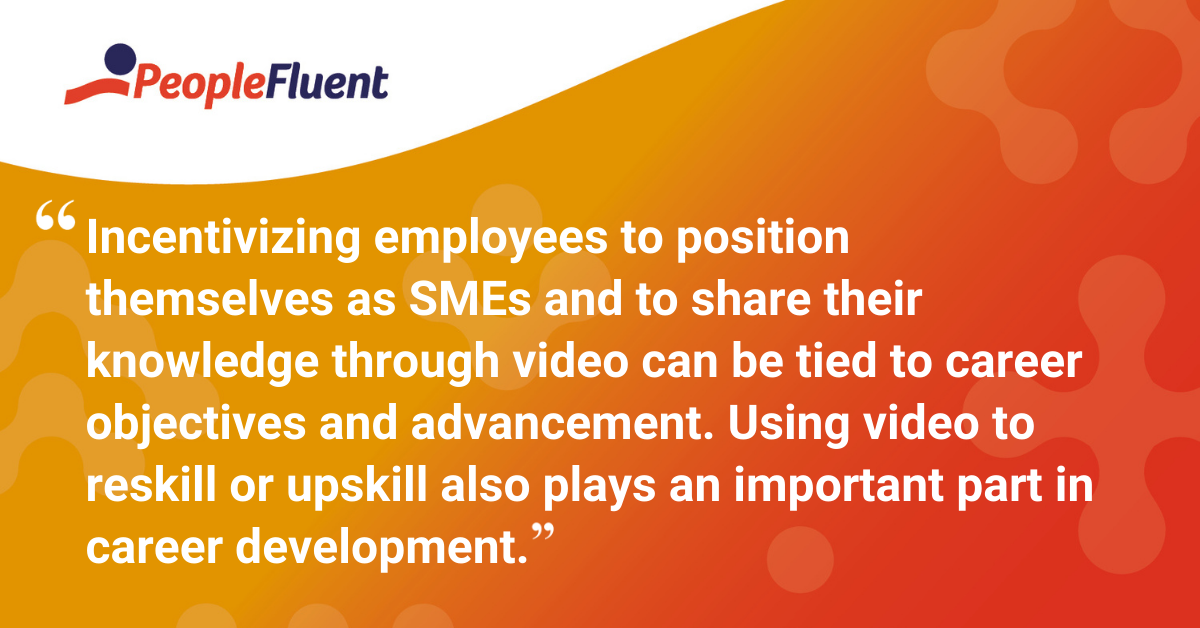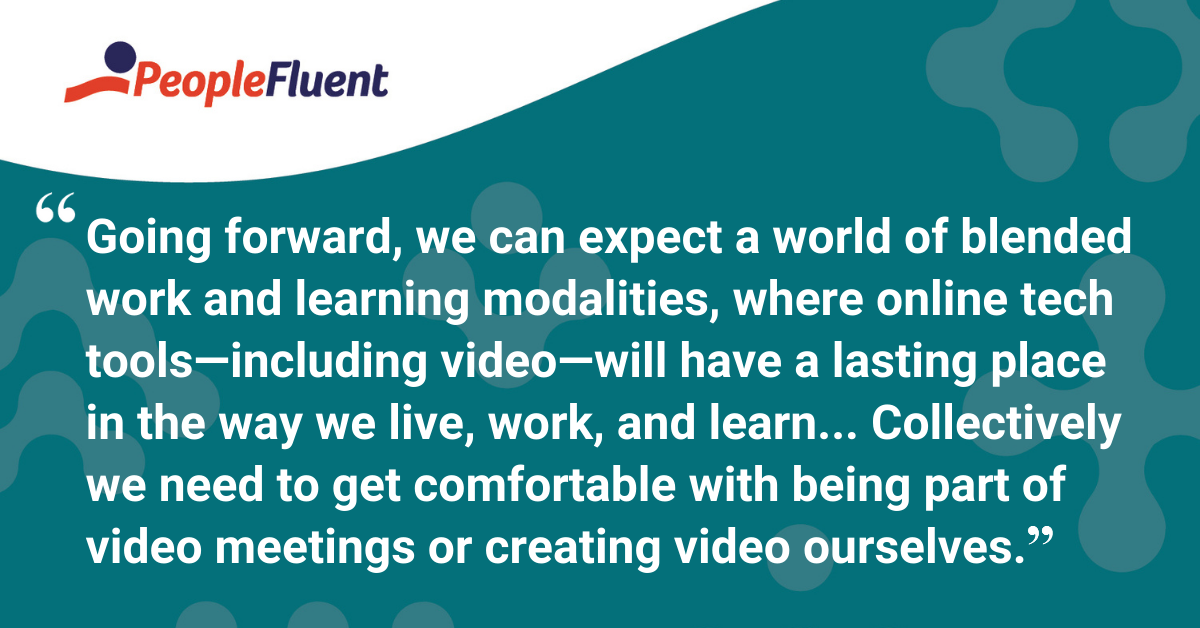Published: Dec 4, 2020Time to read: 6mins Category: Learning
Creator-Centric Video: The New Normal for Corporate Learning?
No other communication medium is quite as powerful as video is today. Read on to discover the how and why of harnessing the power of video via a creator-centric focus and the right learning experience platform (LXP).
Just as we wondered years ago whether mobile phones would permeate society, video trends and usage have crowned the medium as one of the preferred mediums to impart and consume information today. In fact, over 1 billion videos are watched on YouTube alone each day. As organizations digitally transform, video is an essential tool in the new era of training.
You might also like: ‘Everything You Wanted to Know About LXPs (But Were Too Afraid to Ask)’
Social Media as the Catalyst for Creator-Centric Content
With the increased adoption of social media, a generation of creators has emerged, with video as one of their main tools for creating engaging content. Thanks to today’s myriad of technologies and tools to help them tell compelling stories, just about anyone can create video content.
Similarly, video has been widely adopted in our working lives as an engaging and visual mode of communication that suits a variety of learning styles and preferences. It's simpler than ever to create video content.
As organizations strategize their digital transformation plans, video plays a key role in advancing this agenda due to its ability to engage, retain, and delight distributed audiences.

Handpicked for you: ‘5 Reasons Why the ‘Netflix of Learning’ May Be a Bad Idea’
Video Isn’t New, It Just Offers the Simplicity That People Want
Video is not new. It’s now been around for decades as a medium. What is new and exciting is the simplicity with which anyone can use video today.
Anyone can be a creator with the right tools available at their disposal, says Jeff Fissel, VP of Solutions at Instilled by PeopleFluent, our video-based learning experience platform that supports a modern learning culture. “This creator-centric mindset is what’s new about video. It's about the simplicity, the increasing level of comfort people have creating video now, and the incoming workforce that has grown up with technologies that put them in the creator chair,” Jeff affirms.
Video allows us to communicate ideas more easily, effectively, and in a more engaging and personalized manner. Video can help facilitate ideas from Subject Matter Experts (SMEs) within and across departments, and creators can choose to transmit their ideas either in real-time or by recording themselves.
Find out more about the role of video in the LXP approach: ‘Hollywood Hacks: 4 Ideas for Affordable, Professional-Quality Video Learning Content’
Winning Characteristics of Video for Teaching, Learning, and Training
Video is a useful medium because it can be stored, rewound, replayed, and indexed. It’s useful to use because it’s:
- Engaging – the engaging nature of video appeals to a wide range of individuals.
- Visual – its visual nature allows audiences to easily follow ideas and information first-hand.
- Searchable – these days, many video platforms are indexable, allowing audiences to easily skip to their preferred sections of content.
The visual components of learning have widely become a part of learning and development programs globally. Making it easily accessible for employees to create, consume, and share content is pivotal, particularly for remote learners.

Changes Forced by the Pandemic Are Here to Stay
The pandemic has in some ways forced us to shift our efforts to video.
While video may not necessarily be liked by everyone (introverts might find it challenging to create, for example), one thing is certain: it has now become a common way for us to communicate with each other.
Moreover, it’s digital. The digital transformation that was taking place prior to the pandemic has simply accelerated creator-centric trends and the adoption of video content for learning purposes. It’s happening to the extent that we now expect it in our daily lives, including at work.
The option of reverting back to only in-person meetings and classes seems less likely. Going forward, we can expect a world of blended work and learning modalities, where online tech tools, including video, will have a lasting place in the way we live, work, and learn. Whether we use live video or create videos to send and share, collectively we need to get comfortable with being part of video meetings or creating video ourselves.
This ‘forced’ situation has compelled an increase of creators and a rise in creativity. As leaders or individual contributors, creating and sharing video has become mainstream. Let’s also not forget that the format particularly appeals to younger generations of workers who easily engage with video.
Choosing a Video Creation and Delivery Platform
When choosing the right video platform for your organization, consider the following features to make video creation and delivery successful.
The ability to organize, categorize, and keep control of your content is crucial. If your content becomes the ‘Wild West’ and no one can easily find what they need—or if no one knows where to look for information—they will stop using it.
Also, look for the ability to create permissions and hierarchies. Choose a platform with hierarchical management of content, not just channels.
Many video platforms have a single level of hierarchy which doesn’t allow for proper categorization. Having the ability to go infinitely deeper in the hierarchy becomes an important component of managing video content—video ‘containers’ help organize and nest information as needed.

Continue reading: ‘6 Reasons Why You Need to Start Using eLearning Video—Today!’
How to Incentivize the Use of Video Among Staff
There are many factors that will determine the level of video adoption at your organization. At companies, incentivizing employees to position themselves as SMEs and to share their knowledge through video can be tied to career objectives and advancement. Using video to reskill or upskill also plays an important part in career development.
Providing employees the right training to empower their use of technology, including video, can generally increase workforce retention and engagement—metrics that have become especially important with COVID-19.
Video can be described as one the most flexible, effective, and easy communication mediums available today. Thankfully, there are a number of video platforms available to suit your company or institution’s unique needs. What's important is to choose a platform you believe will be easily adopted by staff and to enable a creator-centric approach to teaching and learning that will permeate your new or newly-enhanced digital culture.
You may be interested in reading: ‘What's the Difference Between an LMS and an LXP? [Buyer's Guide]’
Creative Ideas to Present Engaging Video Presentations
Video can be (almost) anything we want it to be.
There are multiple forms of video and it's important to remind individuals that it doesn’t have to be just a ‘talking head’ on a screen. Consider integrating the following design ideas to make your virtual video presentations engaging and memorable for your audience:
- Add music
- Use motion graphics
- Take advantage of filters and backgrounds
- Build word clouds
- Have more than one host to mix up the content